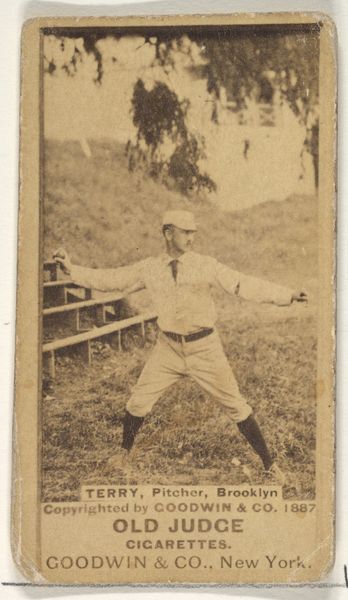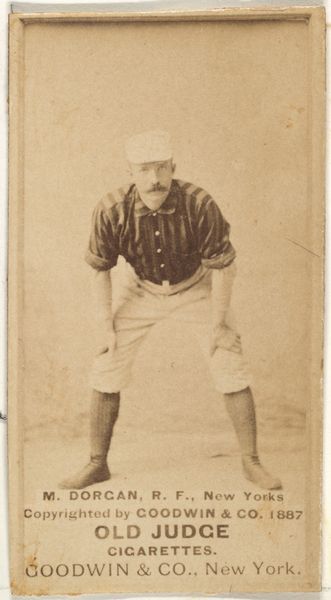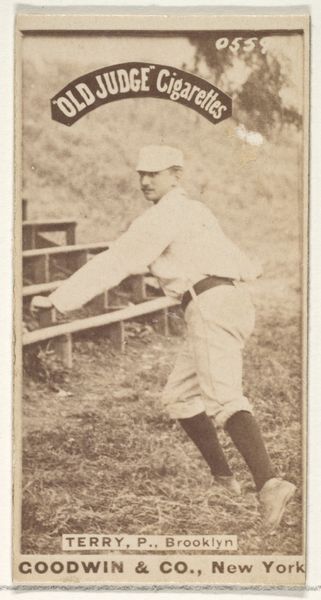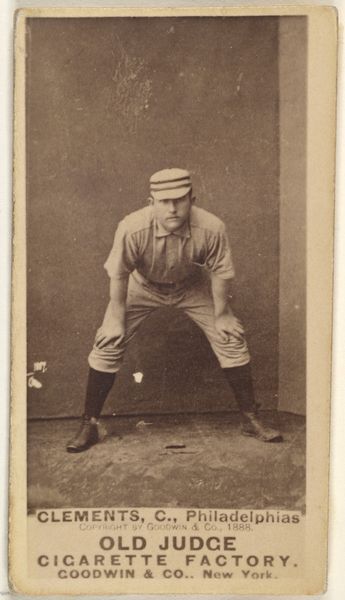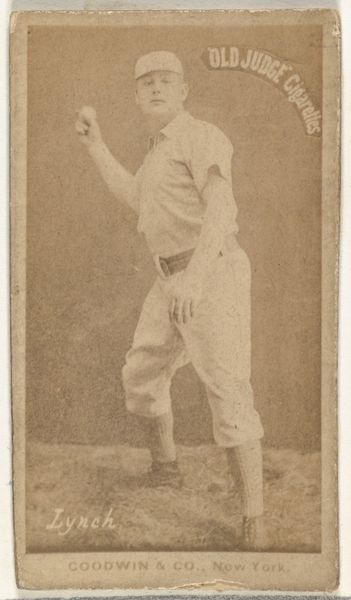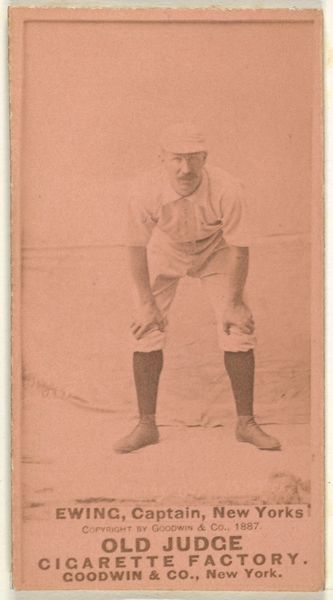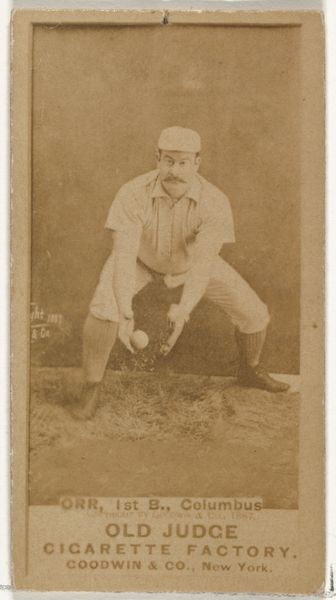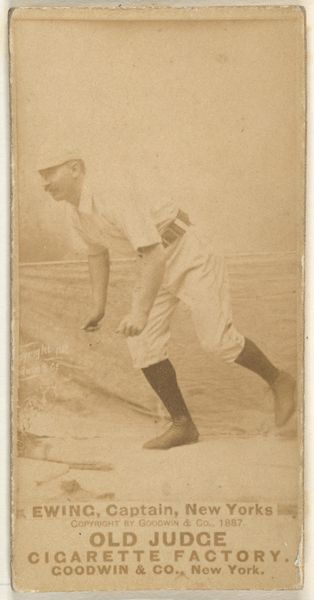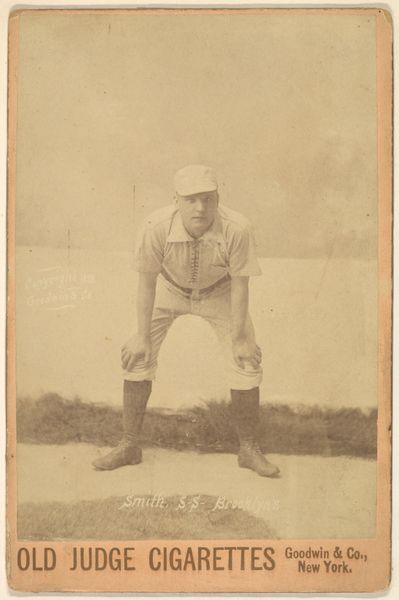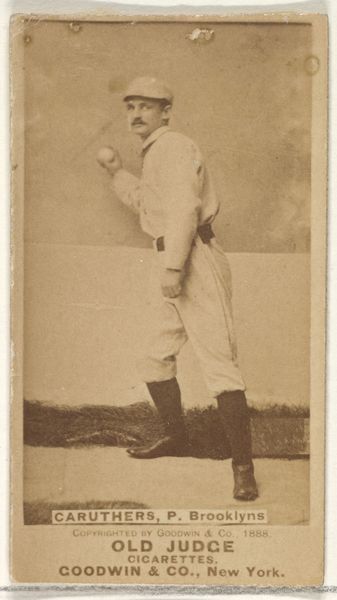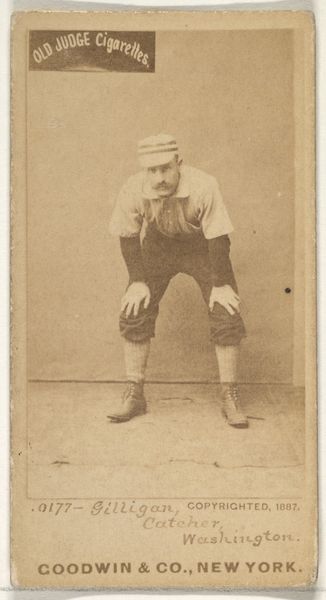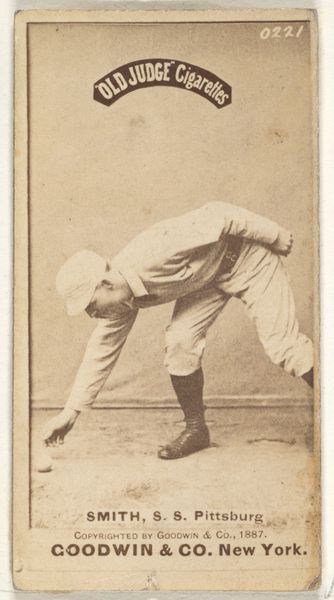
Irwin, Shortstop, Philadelphia, from the Kalamazoo Bats series (N690) issued by Chas. Gross & Co. to promote Kalamazoo Bats 1887
0:00
0:00
Dimensions: Sheet: 4 in. × 2 1/4 in. (10.1 × 5.7 cm)
Copyright: Public Domain
Curator: Let's spend some time looking at "Irwin, Shortstop, Philadelphia," from the Kalamazoo Bats series, dating to 1887. It's a photographic print, originally issued by Chas. Gross & Co. to promote their "Kalamazoo Bats" cigars. Editor: He looks serious, almost comically so. All set and tensed and…dusty! The whole sepia tone really gives him that gritty, ready-for-anything aura. It’s as if he’s trying to stare down the baseball itself. Curator: Indeed. Baseball cards like these were among the first mass-produced collectibles. Beyond their function as advertisements, they reflect the growing popularity of baseball and its cultural significance at the time. Note the carefully posed stance and the formal composition; it's meant to convey an image of athleticism and professionalism. Editor: I bet the photographer told him to puff out his chest and give his best “I’m about to catch something amazing” face. But honestly, it comes off like he’s fighting the urge to yawn. It’s that stiff upper lip, isn't it? You can feel it—the old-timey pressure to be stoic even when playing a game. I wonder, did he ever crack a smile? Curator: These cards helped create the persona of the baseball player as a public figure. They functioned, in some ways, like early forms of celebrity endorsement, linking a product—Kalamazoo Bats cigars—with a celebrated athlete. We can examine these baseball cards to understand changing cultural norms of work and leisure. The image of professional athletes helped blur lines between those separate domains. Editor: See, it makes me think about the mythmaking machine. I mean, a dusty picture hawking cigars elevates Irwin into something bigger. Was it fame, immortality or just plain old capitalist strategy? You’ve got the cigar company leveraging athleticism to shift product! You bet they sold way more than they expected! Curator: It shows how photography was harnessed early on for commercial purposes and the dissemination of specific ideals. We can certainly say the Kalamazoo Bat was very good at its marketing job. Editor: Absolutely! Looking at it today I’m wondering who was truly the advertisement, the ball player or the product itself! Anyway, something so simple and old, a baseball card is full of nuance, right?
Comments
No comments
Be the first to comment and join the conversation on the ultimate creative platform.

